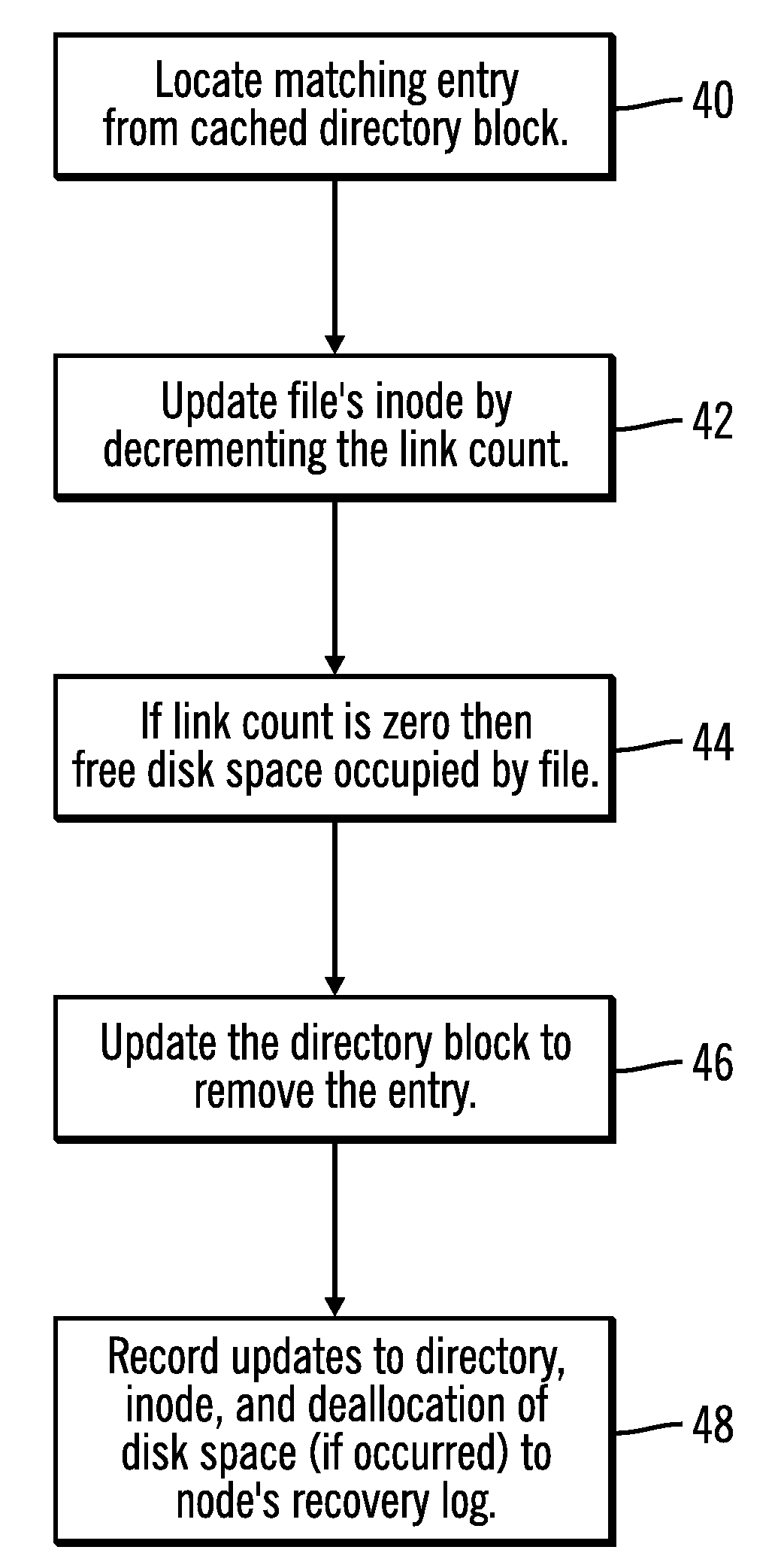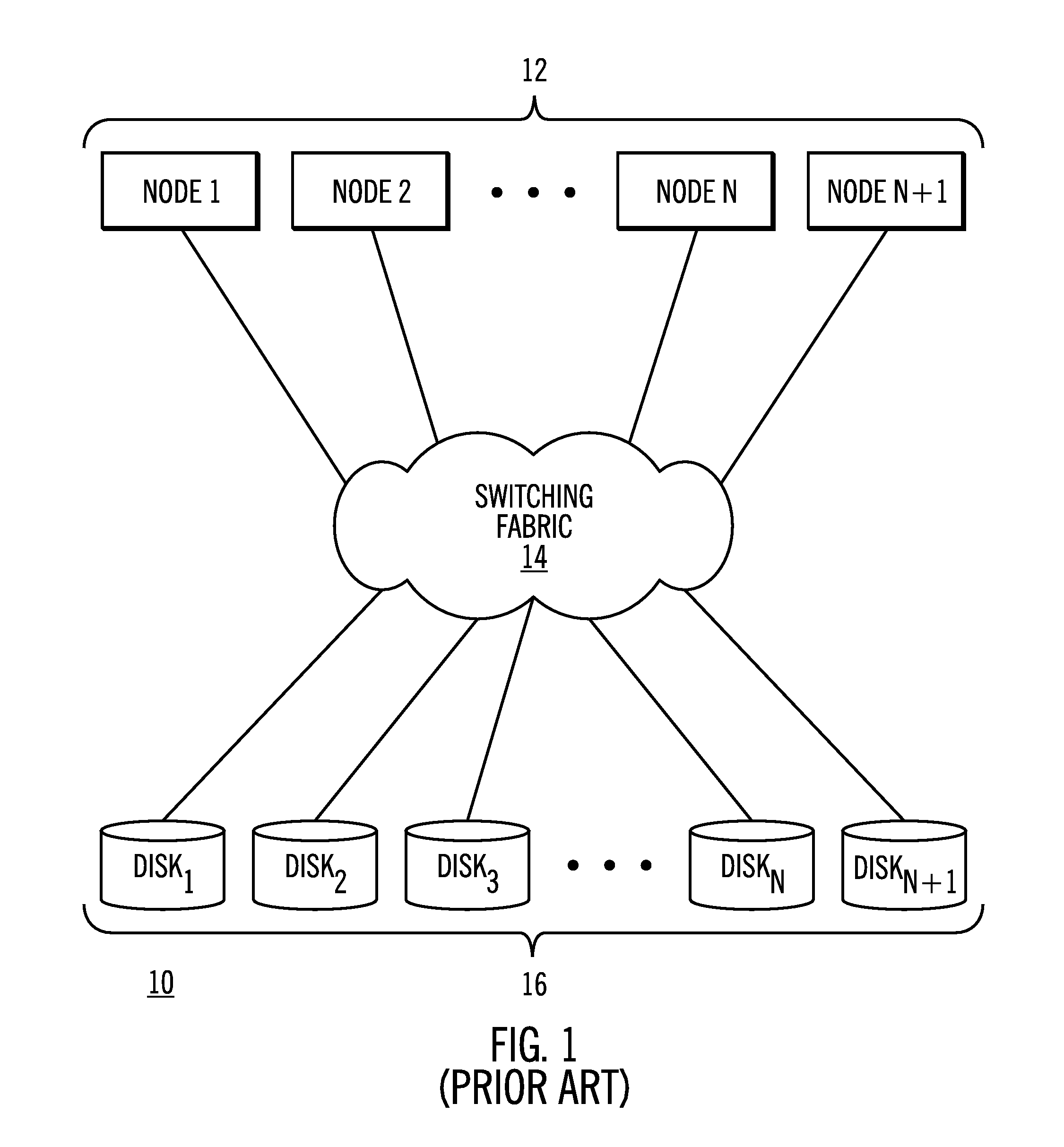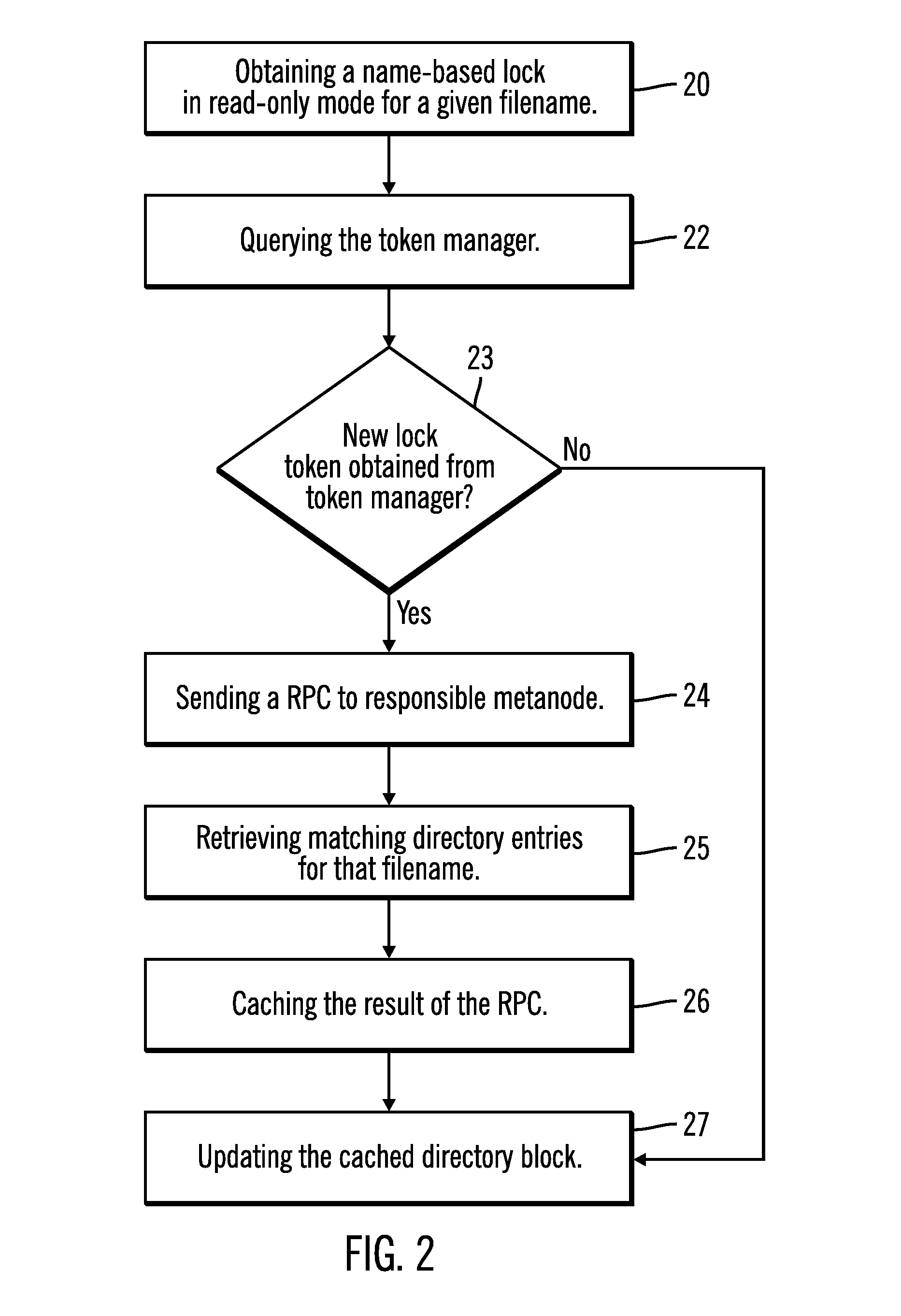Concurrent directory update in a cluster file system
a file system and cluster file technology, applied in computing, instruments, electric digital data processing, etc., can solve the problems of difficult cooperation or sharing of resources between partitioned programs, complicated programming, and programs that must be partitioned to run on multiple machines, and achieve the effect of efficient updating a single directory
- Summary
- Abstract
- Description
- Claims
- Application Information
AI Technical Summary
Benefits of technology
Problems solved by technology
Method used
Image
Examples
Embodiment Construction
[0023]What is disclosed is a method for efficiently updating a single directory from multiple nodes in a cluster file system. In accordance herewith, each lookup, create, or delete operation only locks the particular name of the file that is the target of the operation thereby allowing different nodes to lookup, create or delete different files within the same directory concurrently, while still providing the necessary synchronization for conflicting directory operations.
[0024]One skilled in this art would be readily familiar with the concepts inherent in parallel file systems and those associated with parallelism in the file / data sharing context. In addition, one would be skilled in the art of computer programming as it relates to nodes, locking, lock tokens, and the like, in a clustered file system environment.
[0025]For purposes hereof, a machine readable medium is an article of manufacture such as a floppy disk, a high capacity read-only memory, an optically readable compact disc...
PUM
 Login to View More
Login to View More Abstract
Description
Claims
Application Information
 Login to View More
Login to View More - R&D
- Intellectual Property
- Life Sciences
- Materials
- Tech Scout
- Unparalleled Data Quality
- Higher Quality Content
- 60% Fewer Hallucinations
Browse by: Latest US Patents, China's latest patents, Technical Efficacy Thesaurus, Application Domain, Technology Topic, Popular Technical Reports.
© 2025 PatSnap. All rights reserved.Legal|Privacy policy|Modern Slavery Act Transparency Statement|Sitemap|About US| Contact US: help@patsnap.com



